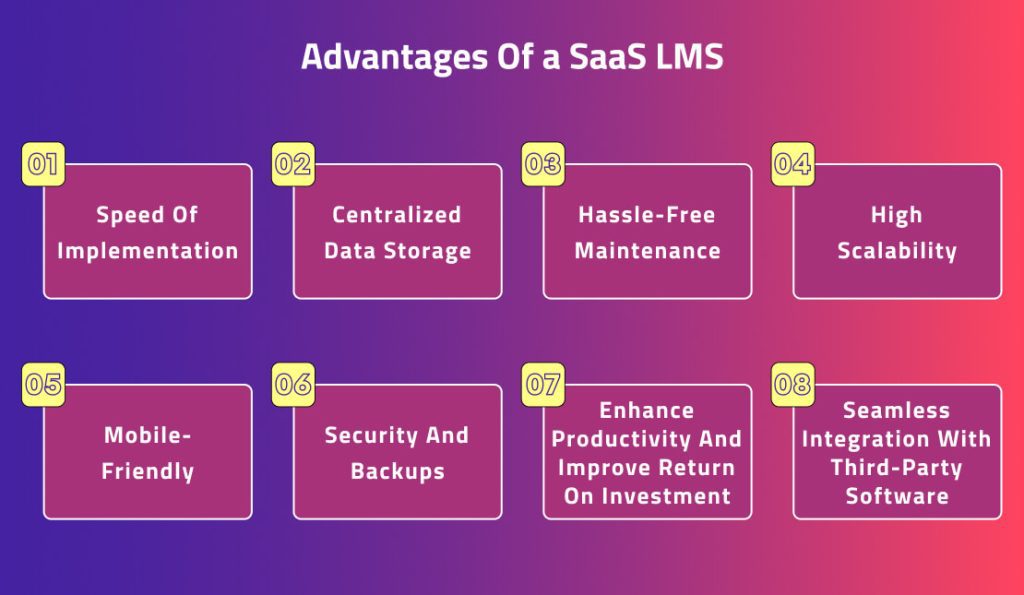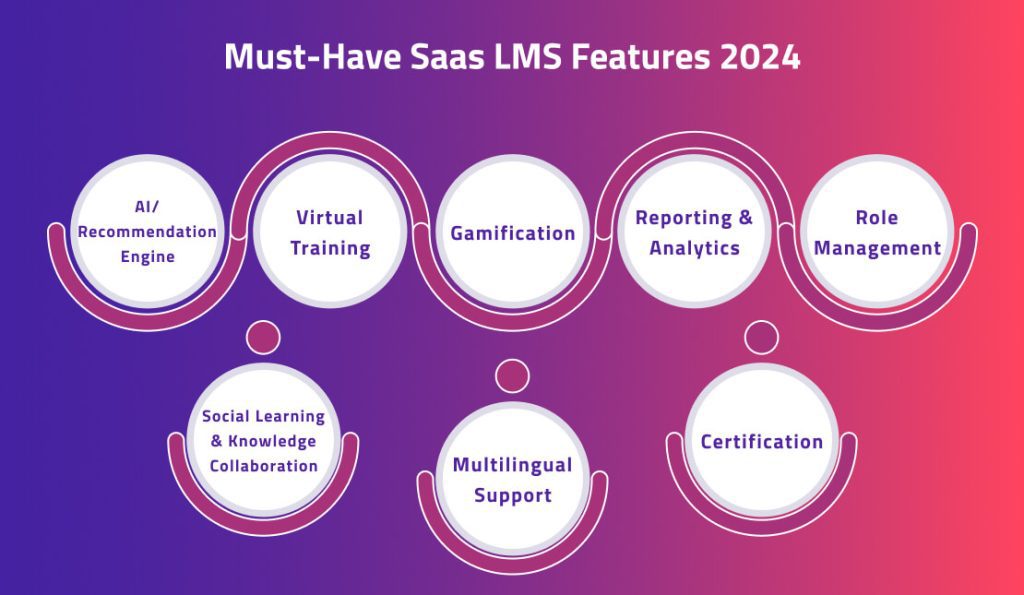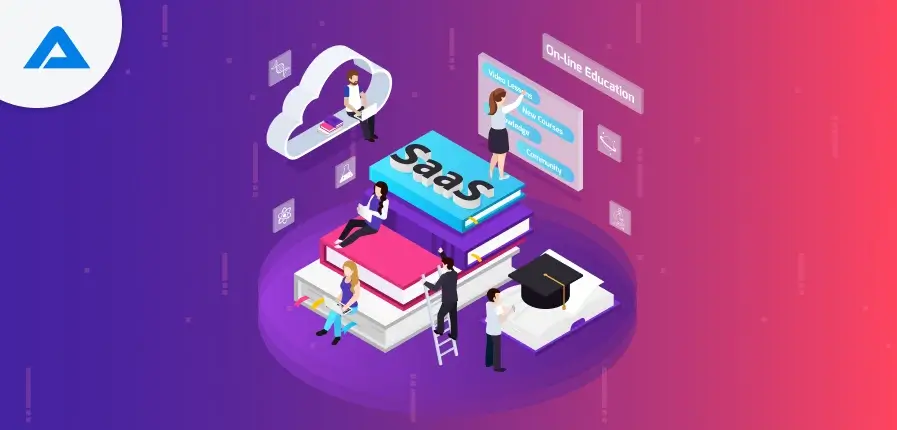The emergence of the internet and the development of cloud computing services are just some of the primary elements responsible for the growth of online education. A growing interest in the latest technology and businesses’ determination to embrace the most recent technological trends in digital transformation. It will accelerate the use of online educational solutions and drive growth in the market for online education.
Our educational industry is experiencing radical shifts as we all sit with laptops, computers, and smartphones. Learning solutions for eLearning are replacing traditional educational systems with the help of customizing existing tools. New tools like learning content management software and learning platforms can be used by learners and employees. Through these amazing tools, learners can work together to learn as they search for structured content and connect more than before.
Selecting the most suitable Learning Management System (LMS) is a great way to achieve this aim. The market is growing for individual LMS development that can manage e-learning. There are many aspects to consider when selecting the most appropriate LMS.
What Is a SaaS LMS?
The SaaS LMS is an online learning management system accessible in the cloud. Before the advent of cloud computing, the only choice for companies was to search for the right software to use eLearning and install it on servers. The software will be accessible to the SaaS program on the cloud rather than installed on your network. Users can connect to them from any place in the globe. This is in sharp contrast to LMS options accessible only from one place.
When you put the idea of SaaS development and LMS in a nutshell, you’ll get an application to help manage and direct training needs. All your data, customers, and information are stored in the cloud. It is not necessary to access your server. You only need to sign in, add your course’s content, and then manage your course’s distribution. SaaS Cloud is now considered the next generation of online learning solutions. Many companies also appear happy using this SaaS LMS model because it is affordable and simple.
Advantages Of a SaaS LMS

This is a digital age. The field of education and training has gained a whole new dimension. The LMS has been recognized as a game changer. That’s why it is a boon to businesses, organizations, teachers, learners, and educators alike. Traditional instructor-led and physical training sessions are now replaced with virtual classrooms.
Speed Of Implementation
If you use SaaS LMS, you won’t require an IT consultant to start the eLearning app development solution. If you’re using the SaaS LMS, there’s no concept of implementation since the whole infrastructure is already in place. Hence, you need to create an account before launching the program. This isn’t like old-fashioned ones, which typically require months of implementation. Thus, it safeguards time and price.
Centralized Data Storage
SaaS solutions in eLearning make sure that your data is safe and secure in one location and is based on the hosting of all your information on the cloud. They organize all the online materials for training and resources so that you can have them available at any moment and anywhere in the world. Suppose the drive on your computer is ever damaged. In that case, there’s no reason to be concerned since your personal information is protected in the cloud.
Hassle-Free Maintenance
SaaS LMS solutions accompany regular updates as well as easy-to-use interfaces. This means you can change and update the software without difficulty. The reduction of IT costs is another benefit since it is not necessary to hire specialists to manage the development of the operation of your SaaS LMS or fix issues. LMS suppliers usually provide assistance for customers that is available all hours of the day, so there is no interruption during the use of one.
High Scalability
If you choose a SaaS LMS, scalability won’t be an issue since it adapts to the business. You can include users, buy accessories, or change your service anytime. The structure is built into the LMS to handle any load of users if users’ numbers increase suddenly. In addition, the software provider will manage the frequent problem of regular bugs, updates, and upgrades centrally.
Mobile-Friendly
The software allows you to access the program from any device or instrument. Every device connecting to your portal’s site can connect to your LMS. It allows students to access their education anytime and anywhere. This will increase the rate of adoption and progress towards training completion. It is also a reason to increase demand for mobility solutions in the marketplace.
Security And Backups
Most SaaS LMSs have security options to protect the cloud-based platform and the information you save in it. The SaaS LMS provider must adhere to the industry data privacy and cloud security standards.
Enhance Productivity And Improve Return On Investment
SaaS LMS vendors offer add-ons to simplify and make online learning classes economical. This allows you to follow your online training courses and provides an opportunity to facilitate the online learning method. You’d like to invest in infrastructure and maintenance, upgrading, or branding expenses, and this will mean a less expensive total Cost of Ownership (TCO) with lesser TCO and much higher returns.
Seamless Integration With Third-Party Software
An SSO allows organizations to select seamless user integration with any third-party software integrated into the LMS. Most businesses require their HRMS or PMS data to be seamlessly integrated into the LMS in a report-based perspective, as well as with APIs readily accessible without additional expense for integration problems.
Must-Have Saas LMS Features 2024

The SaaS LMS is more than an application for governing and overseeing employee training. It’s a tool for ongoing learning, collaboration, and interaction between participants, peers, senior management, SMEs, and peers. More than that, it’s an evolving learning technology that’s underlying the growth of knowledge economies.
The following are essential features of SaaS LMS that will put you well not just for 2024 but also in the future; your eLearning app development company can help you add these features to your SaaS LMS.
AI Recommendation Engine
Training is assigned according to job position, profile, or even level has become obsolete. Artificial intelligence solution-powered learning management systems are no longer necessary but essential for companies of any size or type. Relevant content is recommended for learners by default because the LMS continuously collects information through user behavior, knowledge sets, and information throughout the spectrum to provide an extensive collection of relevant information and results from deep searches.
Virtual Training
The classroom training program is being canceled across all nations and industries after COVID-19. For companies with traditional L&D, switching to virtual instructor-led training is the most effective choice. An LMS with ready-to-use connectors to popular virtual networking platforms allows your students and instructors to interact and connect directly in real-time.
This not only improves the impact of education at a reduced cost but also allows instructors and learners to communicate and share information. It can make the training process more exciting and rewarding for learners.
Gamification
Since gamification continues to establish strong connections to corporate training, it’s become more critical for learning & development (L&D) managers to consider how gaming can improve employee engagement. An LMS that incorporates a Gamification component helps learners be motivated and engaged in improving their knowledge by giving them the sense that they are competing. Having a sense of success and empowering them to meet their personal development objectives.

Transform Learning Today Your Custom eLearning App Developed!

Pooja Upadhyay
Director Of People Operations & Client Relations
Reporting & Analytics
Analytics and reporting have emerged as an essential feature of all top LMSs. The most reputable LMS include analytical and reporting tools that allow employees to map their learning processes and track the performance of their employees. Reporting isn’t, nor should it be, simply a dump of data.
Data from learning management needs to be transformed into useful information that can be used to develop improved L&D strategies and enhance process efficiency. A SaaS LMS with a built-in engine for reporting and analytics will help a company make informed decisions and maintain its competitive edge.
Role Management
Roles management helps determine the roles users can fulfill in the Learning Management System. From Administrator to Learner to Line Manager, Instructor, and the combination of role types, roles grant or limit access and privileges to the various parts within the LMS. An essential feature for any SaaS LMS is a variety of user roles that have the right degree of access rights as well as access rights that are mapped according to the needs of each.
Social Learning & Knowledge Collaboration
Today’s world is awash with connectivity, and life’s happenings are recorded in status updates and timelines. Why should learning be the same? Social learning and knowledge collaboration is now an essential component of the learning process, allowing students to share their knowledge.
It assists in capturing various forms of information in business. It goes past the traditional view of assignments, courseware, and assessments. If you are looking for a SaaS LMS, opting for one with social tools (how many and the number of features depending on the nature of the user groups within your organization) could help improve the quality of learning.
Multilingual Support
Businesses with remote employees in diverse locations require the capability to provide their employees with a training program that they can use in their native languages. Employees who have been effectively taught (in the preferred language) can give quick and accurate answers to customer queries. Additionally, using an LMS that supports multilingual users is essential to any truly multinational company, thanks to the presence of its products in global markets.
Certification
Indeed, the primary objective of an LMS is to facilitate effortless learning. However, since learning takes place (primarily) within a virtual context, both instructors and students expect the course to be certified and deemed valid for use in the workplace. That’s where certificates in the form of an LMS can come in—allowing L&D to include certificates in the curriculum (or learning pathways) and provide prompt recognition of the student.
Responsive/ Mobile-Optimized Interface
One of the primary indicators of a top LMS is that it’s responsive to mobile devices, rendering beautifully on every device with any resolution and in every browser available. As smartphones dominate the globe, an inflexible LMS may be in danger of being a victim of the current generation of digitally savvy students. If companies focus on mobility, they’ll be able to ensure that the highest quantity of students have access to the course, driving the return on investment.
Single Sign On (SSO)
The amount of times that you’ll need to supply your login credentials for access to different software development and services, such as the social networks you love or your business’s, your email, and so on. is too numerous to allow for an efficient use of your time. A SaaS LMS equipped with single sign-on features can solve this issue.
The ability to send your username and password only once to the Identity Provider allows users to access numerous services and applications without re-authenticating. It can improve productivity and reduce IT expenses (owing to the fewer calls to reset passwords). The benefits of SSO within a SaaS LMS are numerous.
User-First Interface
It’s crucial for organizations today to possess the right understanding and clarity of modern LMS, as even the most amazing E-learning software alone can’t guarantee participation if the method of delivery (read LMS!) is difficult and unfriendly for users.
An up-to-date user interface for an LMS is a definite requirement that allows learners to navigate through the LMS easily. When the user experience is seamless, students are engaged, which results in higher learning completion rates. Furthermore, as the learners finish their courses, the organizations will get better value for their money. A higher productivity level simply means greater returns on investment.

SaaS LMS Bringing Revolution In The E-Learning Industry
Learning management system is rightly being called the next major thing in the world of online learning. The SaaS market is expanding at a rate of 11% CAGR. This is due to the spread of pandemics that have accelerated this growth. LMS use is not just essential; it has to be able to be accessed on-demand from everywhere in the world.
Traditional hosted LMSs require software installation and ongoing maintenance and require many additional tasks. This adds cost to operating and takes a lot of time. SaaS offers a much more affordable and accessible solution. Modern cloud-based services are available and hosted on the internet and accessible via the web’s standard browser. This also aids instructors and students alike by providing faster and more efficient course implementations and the best user experience. So, this SaaS-based LMS that comes with exciting features has an advantage over conventional hosted LMS.
When you use SaaS, it is where data is stored and backed up on the cloud. It is accessible on any device or geographical location around the globe. Additionally, it offers a variety of advantages, such as commuting or even sitting in a waiting area, as well as a chance to access online educational content. Certain other SaaS LMS providers also allow offline viewing of content, and it automatically connects whenever you reconnect.
SaaS LMS incorporates cloud hosting, which means you can host your data on a Cloud server. Therefore, there’s no requirement for an additional hard drive to store the data. This allows all data to be kept in a central location and ensures that your data and information are protected and secure in a single spot and won’t be lost.
Is SaaS LMS Always The Best Option?
Your company’s training requirements and the resources available will decide which SaaS learning management software is the most suitable option. One of the main differences between the self-hosted and SaaS choices is the level of control over user-friendliness.
Here are a few instances where having your computer rather than using cloud-based solutions could be better.
- Hosting your LMS in-house may be beneficial if your organization has sensitive information.
- The option to host your content is available for your course if you require specific content or custom features.
- You may require your instruction to collaborate with the specific application you employ internally. A privately hosted LMS may be needed if SaaS services don’t connect with the software you have already installed.
Final Thoughts
As time goes by, the LMS market will increase because many countries will be implementing highly effective tools for e-learning. Offering a wealth of features and benefits, SaaS LMS is a worthwhile investment for a company. It could enhance the effectiveness of your eLearning app development services by allowing you to plan your training and learning from any location on the planet using a device connected to the internet. Equally important is to research the software before investing, which will be worth your time.
Through SaaS E-Learning, the future of online learning will be social, distant, interconnected, and mostly internet-based. It will be fun if you’re a company owner or an instructor using it to educate your students or reinforce your skills. A robust library of contents will take your online training to a whole new degree. Therefore, looking for a complex digital learning platform that can add value to your education requirements is essential.

Empower Your E-Learning Platform with Cutting-Edge Development—Hire Expert App Developers!

Pooja Upadhyay
Director Of People Operations & Client Relations

